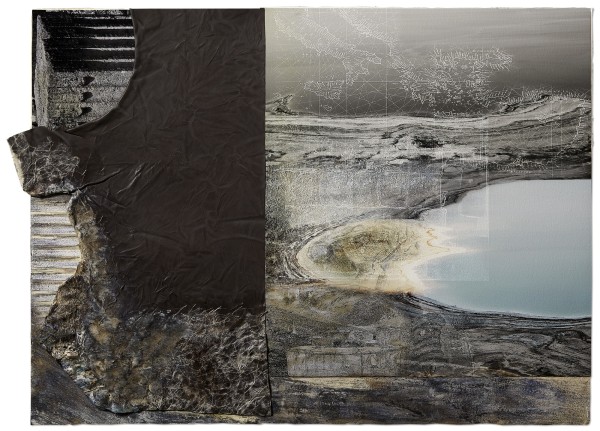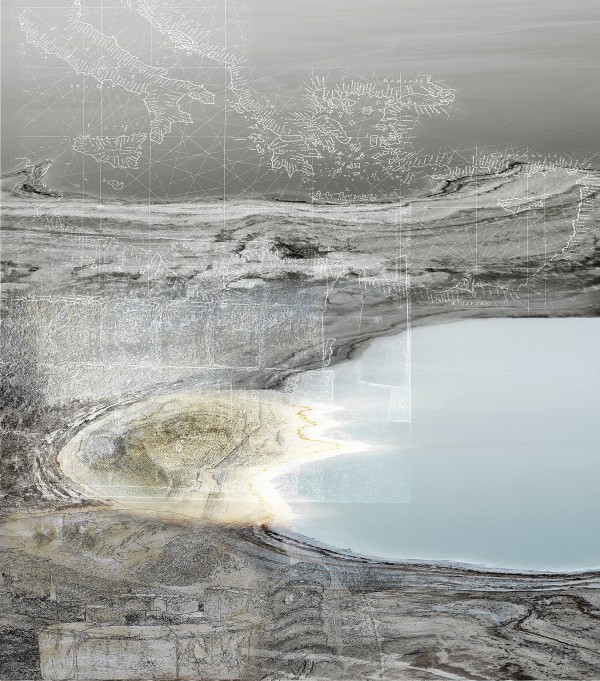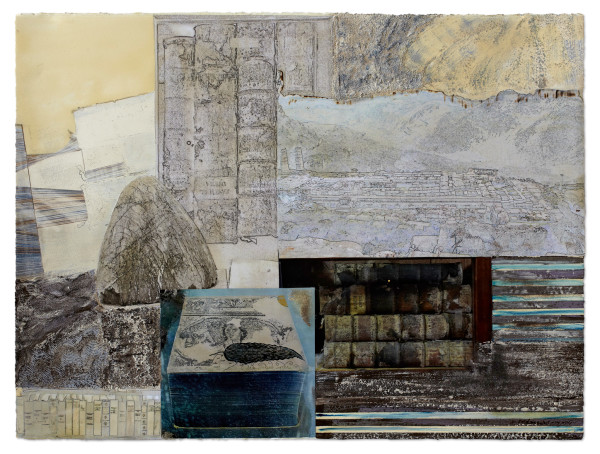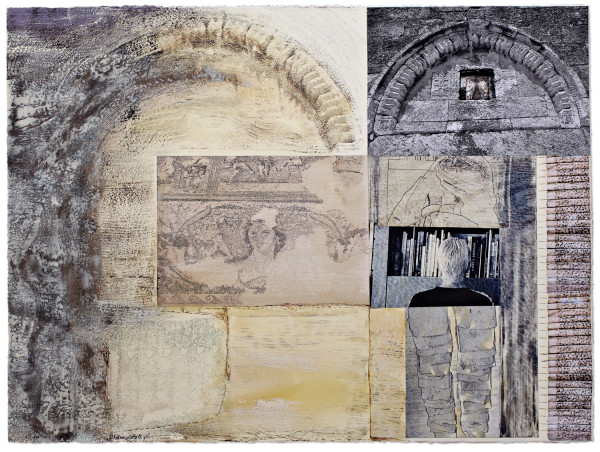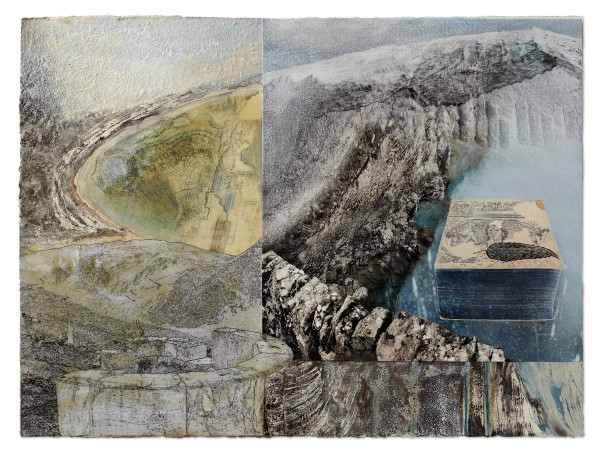נמכרה באפריל 2021
5 עותקים
Phila-delphi –Navel, 2015
כגריד קואורדינאטות סמוי בזמן ובמרחב, השתלבו היעדים-פילדלפיה-ארה"ב , ומסע אישי פרטי לתיעוד המורשת הקלאסית לדלפי ביוון. התגלויות אקראיות לכאורה חיברו מזרח ומערב באופן קונקרטי וסמנטי, וגם על רצף ציר הזמן. מסתבר שרבת עמון בעבר הירדן המזרחי נקראה פילדלפיה, ע"י תלמי פילדלפוס השני במאה השלישית לפני הספירה, וכך נשאר שמה עד לכיבוש המוסלמי במאה השביעית. פרט המופיע בדפוס המפה המקורית של אורטליוס הבלגי מן המאה ה-16. בבחירת המפה הספציפית והטמעתה ביצירה- Phila-delphi –Navel, הושם הדגש על הדמיון בין צורתו המסויימת של ים המלח במפה זאת לבין התוואי הבהיר שתועד בצילום אופק ההרים בדלפי. אתר האומפלוס, מקום מושבה של האורקל מדלפי מעביר את עוצמת כוחה הנבואי-מיתולוגי. 'טבור העולם' המיתולוגי בדלפי, מומחש ויזואלית כ'טבור' במרכז התצלום, באמצעות תנועה ספירלית וממורכזת של שברי אבני הצפחה שצולמו בקרבת האתר. הטבור- מקור העוצמה והויטאליות העוברת מן האם לעוברה, הוא גם מקור וערש המורשת התרבותית הקלאסית. בסמנטיקת השמות דלפי מגולמת במרכז השם פילדלפיה.
Phila-delphi – Navel, 2015
As a temporally and spatially invisible grid of coordinates, Philadelphia, USA, and a private-personal journey to Delphi, Greece, to document the classical heritage, became intertwined. Ostensible random revelations linked East and West concretely and semantically, as well as temporally. It turned out that in the 3rd century BCE, Amman, capital of Transjordan, was called Philadelphia after Ptolemy Philadelphus II, and the name remained until the Islamic conquest in the 7th century—a detail appearing in print on the original 16th-century map drawn by the Belgian cartographer Abraham Ortelius. In choosing the specific map and its assimilation in the work Phila-delphi – Navel, emphasis was placed on the similarity between the peculiar shape of the Dead Sea in the map, and the light-colored route documented in a photograph of a mountainous horizon in Delphi. The Omphalos, the site of the Delphic Oracle, conveys the intensity of its prophetic mythological power.1 The mythological "navel of the world" in Delphi is visually illustrated as a "navel" at the heart of the photograph by means of a centered spiral movement of shale fragments photographed near the site. The navel—the source of power and vitality transferred from mother to fetus, is also the source and cradle of classical cultural heritage. Semantically, the name Delphi is embodied at the core of the name Philadelphia.
1. According to mythology, Zeus set two eagles free from opposite ends of the earth. In their meeting place, in Delphi, which came to symbolize the center or navel of the world, in the Temple of Apollo, Zeus placed the Omphalos Stone—an object sculpted as new in the Hellenistic and Roman periods.
- Current Location: Studio




